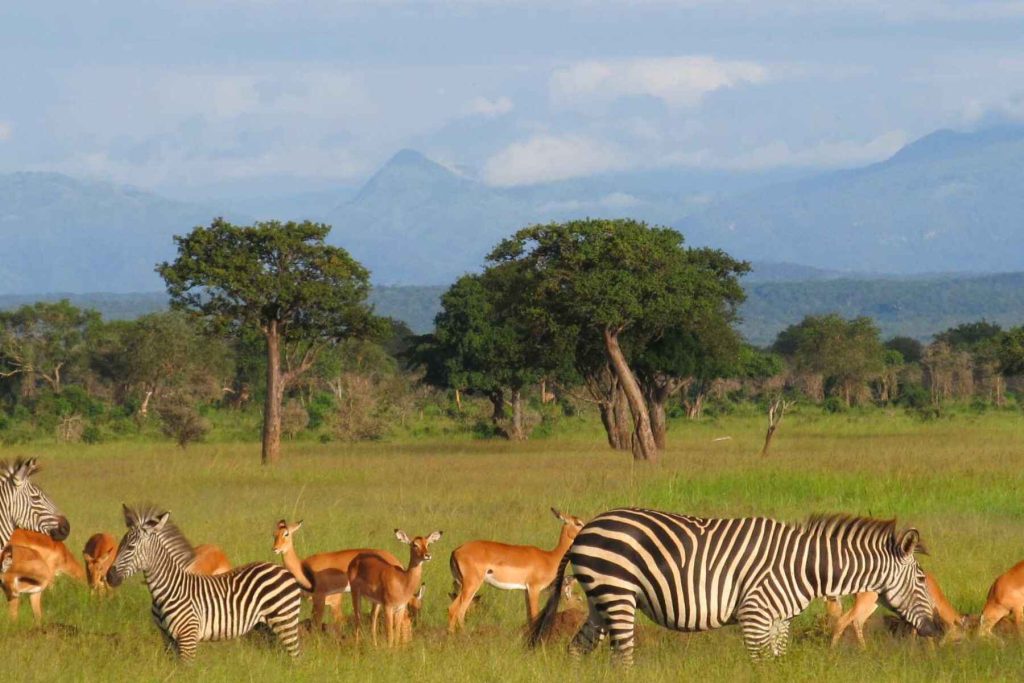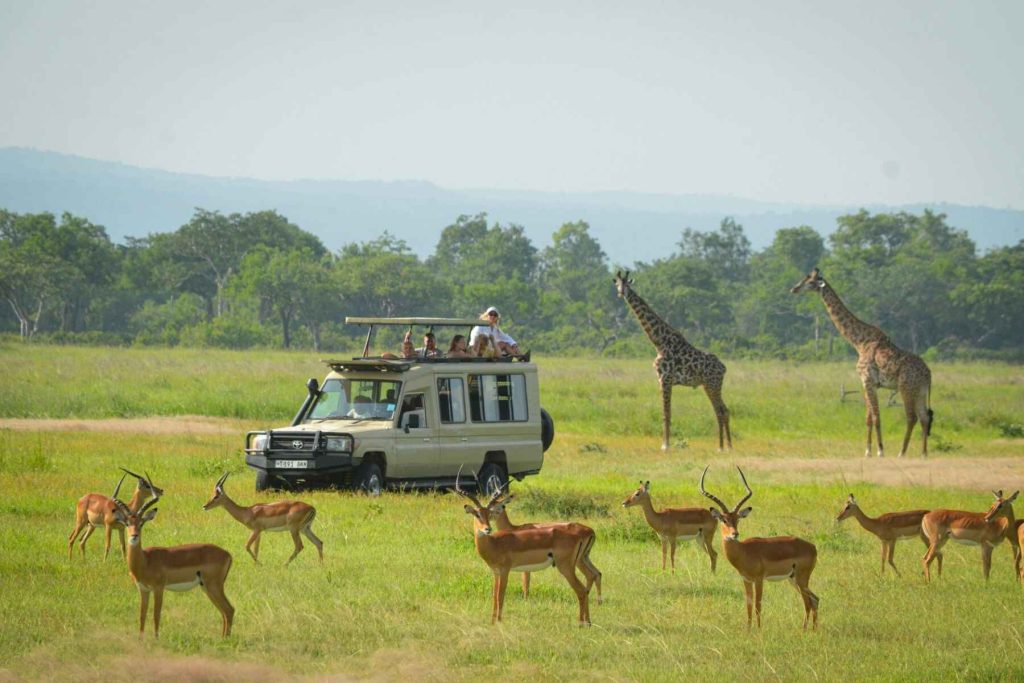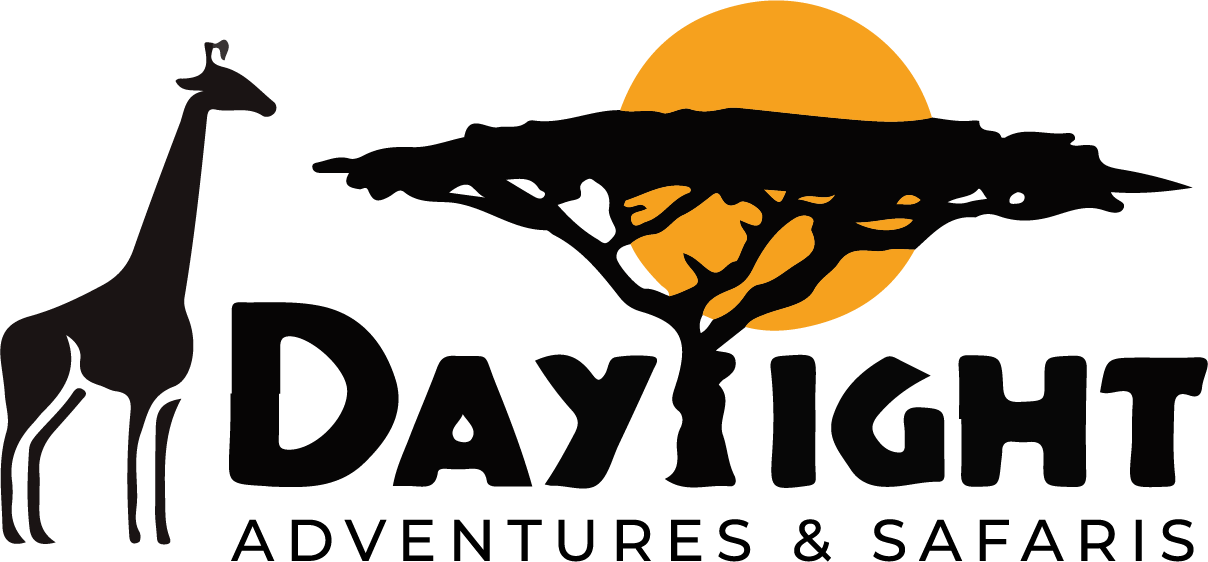Mikumi National Park
DESTINATION DETAILS
About Mikumi National Park
Mikumi National Park, the fourth largest park in Tanzania, stretches across 3,230 square kilometers, nestled between the Uluguru Mountains and the Lumango range. Conveniently located just a four-hour drive west of Dar es Salaam, it’s easily accessible via the main Morogoro and Iringa road, making it a favored destination for weekend getaways or quick excursions for those visiting the city.
As the main road traverses through the park, it offers a seamless entry into Mikumi’s breathtaking landscapes and abundant wildlife. The park’s proximity to Dar es Salaam doesn’t compromise its natural splendor; instead, it enhances the experience, drawing visitors with its panoramic views and diverse fauna.
Mikumi National Park is renowned for its ease of wildlife spotting, with creatures well acclimatized to the presence of visitors. The early mornings and late afternoons are particularly enchanting, as the light enhances the scenery and wildlife activity reaches its peak. Embark on game drives along the Kisingura Circuit, Hippo Pools, and Vuma Hill for a rewarding adventure.
The Mkata Floodplain steals the spotlight with its open horizons and teeming wildlife, often likened to the famed Serengeti plains. Here, eland, the world’s largest antelope, roam freely, alongside greater kudu and sable antelope in the miombo-covered foothills. The park’s flora is equally captivating, with giant Baobabs and palms lining watercourses, while the presence of ebony trees adds to its allure.
Lions, giraffes, zebras, impalas, and buffalo herds dominate the grass plains, woodlands, and rocky outcrops, offering ample opportunities for unforgettable encounters. During the dry season, wildlife congregates around waterholes, providing prime viewing opportunities for both herbivores and their predators.
Bird enthusiasts will be delighted by Mikumi’s avian diversity, with over 300 species recorded in the park. From resident inhabitants to Eurasian migrants, the skies come alive with a symphony of colors and calls, especially from October to April.
Beyond its natural wonders, Mikumi National Park serves as a hub for research and conservation efforts. Anglia University and the Darwin Trust have collaborated for over a decade, studying olive baboons and updating records on other animals and vegetation, contributing to the park’s preservation.
For travelers seeking the optimal experience, the dry season from June to February offers ideal conditions, although the short rains in November and December may pose some challenges. Yet, even amidst the lush greenery of June and July, Mikumi’s allure remains undiminished, promising an unforgettable safari experience for all who venture into its embrace.


FAQs
What is so special at Mikumi National Park?
Mikumi National Park is known for its diverse wildlife and picturesque landscapes, offering excellent opportunities for game viewing, including sightings of lions, elephants, giraffes, zebras, and various bird species.
How much is Mikumi National Park?
The entrance fees for Mikumi National Park vary depending on nationality and vehicle type. For foreign non-residents, the fees typically range from $30 to $40 per person and $20 to $30 per vehicle.
What animals are in Mikumi National Park?
Mikumi National Park is home to a wide variety of wildlife, including elephants, lions, giraffes, zebras, buffaloes, wildebeests, hippos, crocodiles, and numerous bird species.
How many elephants are in Mikumi National Park?
The exact number of elephants in Mikumi National Park can vary, but it is home to a significant population of elephants, providing visitors with excellent opportunities for elephant sightings.
Which is better, Mikumi or Selous?
The choice between Mikumi and Selous depends on individual preferences. Mikumi is smaller and more accessible, making it suitable for shorter safaris, while Selous offers a more remote and off-the-beaten-path safari experience with larger expanses of wilderness.
What is the most visited park in the National Park Service?
The most visited park in the National Park Service is typically Great Smoky Mountains National Park, located in Tennessee and North Carolina in the United States.
What birds are in Mikumi National Park?
Mikumi National Park is home to a diverse array of bird species, including raptors, waterfowl, and migratory birds. Some commonly sighted birds include African fish eagles, lilac-breasted rollers, and yellow-throated longclaws.
What is a national park known for?
National parks are known for their conservation of natural landscapes, biodiversity, and cultural heritage, as well as providing opportunities for outdoor recreation, education, and scientific research.
What is something unique or interesting about the National Park of Greenland?
The National Park of Greenland is one of the largest national parks in the world, covering an area of over 375,000 square kilometers and encompassing diverse landscapes, including glaciers, fjords, and Arctic tundra.
What is the most famous park in Ukraine?
One of the famous national parks in Ukraine is the Carpathian National Nature Park, located in the Carpathian Mountains, known for its stunning scenery, diverse ecosystems, and recreational opportunities.
What is the name of the national park in Aruba?
Arikok National Park is the name of the national park in Aruba, known for its rugged terrain, desert landscapes, and cultural heritage sites.
What Park is popular in Tanzania?
Tanzania is home to several popular national parks, including Serengeti National Park, Ngorongoro Conservation Area, Tarangire National Park, and Mikumi National Park, among others.
Is Mikumi worth it?
Yes, Mikumi National Park is worth visiting for its abundant wildlife, beautiful landscapes, and relatively easy accessibility, making it an excellent destination for safari enthusiasts.
Is Mikumi part of the Serengeti?
No, Mikumi National Park is a separate national park located in southern Tanzania, while Serengeti National Park is situated in the northern part of the country. Both parks offer unique safari experiences but are distinct destinations.
Is Mikumi a game reserve?
Mikumi National Park was initially established as a game reserve in 1964 and later upgraded to national park status in 1975 to enhance its conservation and protection efforts.
How much does it cost to go to Lake Natron Park?
The entrance fees for Lake Natron Park vary depending on nationality and vehicle type. For foreign non-residents, the fees typically range from $30 to $40 per person and $20 to $30 per vehicle.
